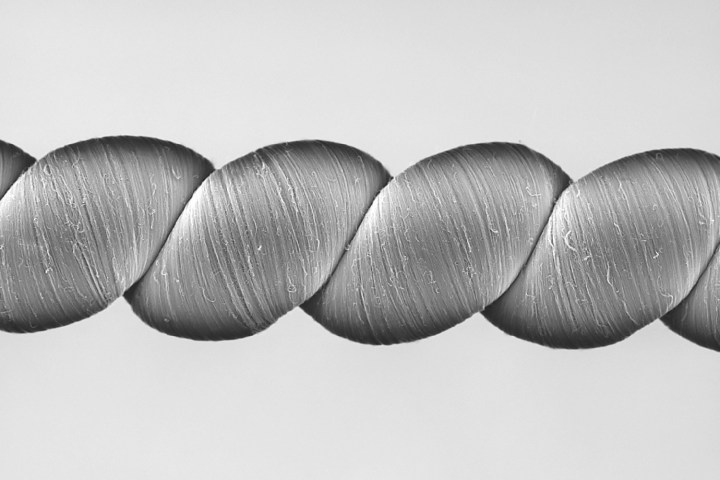
“My first efforts doing this go back to 1980, using artificial polymers to build electrochemical artificial muscles,” Ray Baughman, one of the researchers from the University of Texas at Dallas, told Digital Trends. “We figured out that if you can use electrical energy to drive an artificial muscle to produce mechanical energy, maybe it’s possible to run it in reverse — and harvest mechanical energy as electricity. For all the years since then, I’ve failed to make this work. Now that’s changed.”
The yarn developed by the researchers can be twisted into elastic-like coils, in a way that allows the thread to generate electricity when stretched. The energy from one piece of yarn can power an LED and generate 250 watts per kilogram when a number of them are bound together and stretched 30 times per second.
While it is still early days for the research, it is promising compared with other harvester technologies — with 100 times the electric power per weight, compared to alternate attempts at weavable fibers. According to the researchers, 31 milligrams of the so-called “twistron” yarn could generate sufficient electricity to send two kilobytes of data 100 meters every 10 seconds.
One problem that currently exists, however, relates to the relative scarcity of carbon nanotubes. “Carbon nanotubes are very expensive to produce, and not manufactured in large quantities,” Baughman said. “As a result, the present applications for this work are limited to tasks which do not require much yarn. For example, right now you could sow the yarn into a textile to monitor an individual’s movement without having to use a battery.”
A bit more yarn could allow people to generate and then store their own electricity through physical activity. “But it’s the future possibilities which most excite me,” Baughman continued. “That’s the dream of being able to make yarn that will allow us to inexpensively and efficiently harness the energy of the ocean’s waves, beyond that which is possible with conventional harvesters.”
Whether it’s powering tomorrow’s wearables, or fully harnessing the ambient activity of ocean waves, this could be the beginning of some very exciting work. A paper describing the research was recently published in the journal Science.


